Imagine walking through ancient fortresses that have stood guard over the Caribbean for centuries, where the echoes of history resonate through stone walls and narrow passages. Welcome to the San Juan National Historic Site, a treasure trove of Puerto Rican history and architectural marvels. Located in the vibrant city of San Juan, this site offers travelers a unique glimpse into the past. This guide will provide you with everything you need to know to make the most of your visit to the San Juan National Historic Site.
Getting to the San Juan National Historic Site
Reaching the San Juan National Historic Site is convenient and straightforward, whether you’re traveling by car, public transportation, or on foot.
Driving: If you’re driving from other parts of Puerto Rico, take Route 22 towards San Juan and follow signs for Old San Juan. Parking is available near the site, but spaces can be limited, especially during peak tourist seasons.
Public Transportation: San Juan’s public transportation system includes buses that service Old San Juan. The T5 and M3 bus routes are particularly convenient for reaching the historic site.
Walking: If you’re staying in Old San Juan, the historic site is within walking distance. Enjoy a leisurely stroll through the cobblestone streets, taking in the colonial architecture and vibrant local culture.
Travel Tips: Arrive early to avoid crowds and secure parking. Wear comfortable walking shoes and bring water, sunscreen, and a hat, as you’ll be spending a lot of time outdoors.
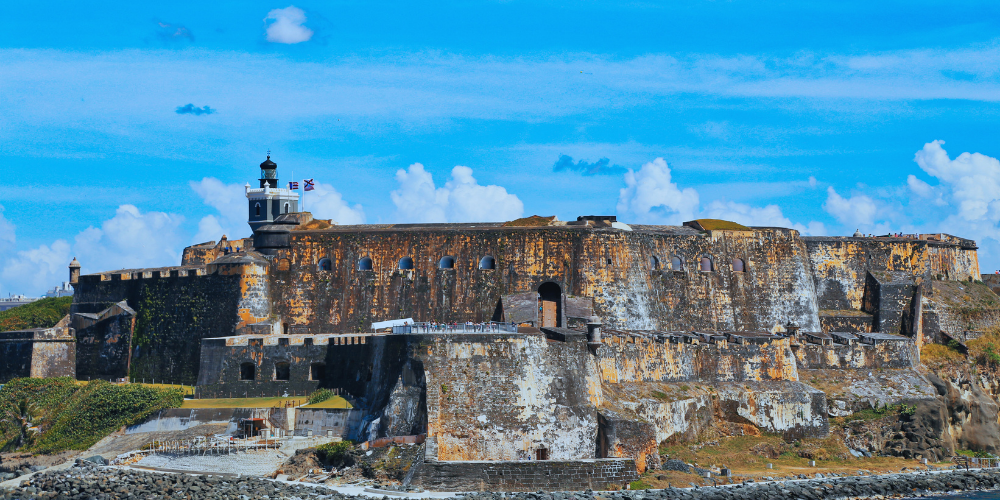
Historical Background
The San Juan National Historic Site encompasses several fortifications that played a crucial role in the defense of Puerto Rico and the Spanish Empire.
Construction and Purpose: The fortresses were built between the 16th and 18th centuries by the Spanish to protect San Juan from sea-based attacks. Their strategic location made them essential in safeguarding the island and the wider Caribbean region.
Key Historical Events: The fortresses witnessed numerous battles and invasions, including attacks by the British, Dutch, and later the Americans. They stood as symbols of Spanish colonial power and resilience.
Preservation Efforts: Today, the National Park Service manages the site, ensuring the preservation and restoration of these historical landmarks. Ongoing conservation efforts maintain the structural integrity and historical authenticity of the fortresses.
Exploring the Fortresses
Castillo San Felipe del Morro (El Morro): El Morro is the most iconic fortress, perched on a cliff overlooking the Atlantic Ocean. Built in 1539, it features six levels of fortifications, including ramparts, barracks, and a lighthouse. Explore the dungeons, see the cannons, and walk along the walls for breathtaking views of the ocean.
Castillo San Cristóbal: Constructed to protect against land-based attacks, San Cristóbal is the largest fortress built by the Spanish in the New World. Its intricate design includes tunnels, moats, and bastions. The views from its ramparts provide a panoramic perspective of San Juan and the surrounding areas.
Fortín San Juan de la Cruz (El Cañuelo): Located across the bay from El Morro, El Cañuelo was part of the defense system designed to crossfire with El Morro, creating a formidable barrier against invaders. Though smaller, it played a crucial role in the overall fortification strategy.
City Walls: The ancient city walls of San Juan encircle the old town, providing a sense of security and grandeur. Built to protect the city from invaders, these walls are up to 18 feet thick in some places and offer scenic walks with historical plaques detailing their significance.
The Visitor Experience
Hours and Admission: The San Juan National Historic Site is open daily from 9 am to 6 pm. Admission includes access to both El Morro and San Cristóbal. Discounts are available for seniors, children, and large groups. Check the official website for the most up-to-date information on ticket prices and hours.
Visitor Centers: Both El Morro and San Cristóbal have visitor centers with exhibits and educational programs. These centers provide historical context, interactive displays, and detailed maps to enhance your visit.
Guided Tours: Guided tours are available and highly recommended for a deeper understanding of the site’s history. Knowledgeable guides share fascinating stories and insights about the fortresses’ construction, battles, and daily life. Tours typically last about an hour and are available in both English and Spanish.
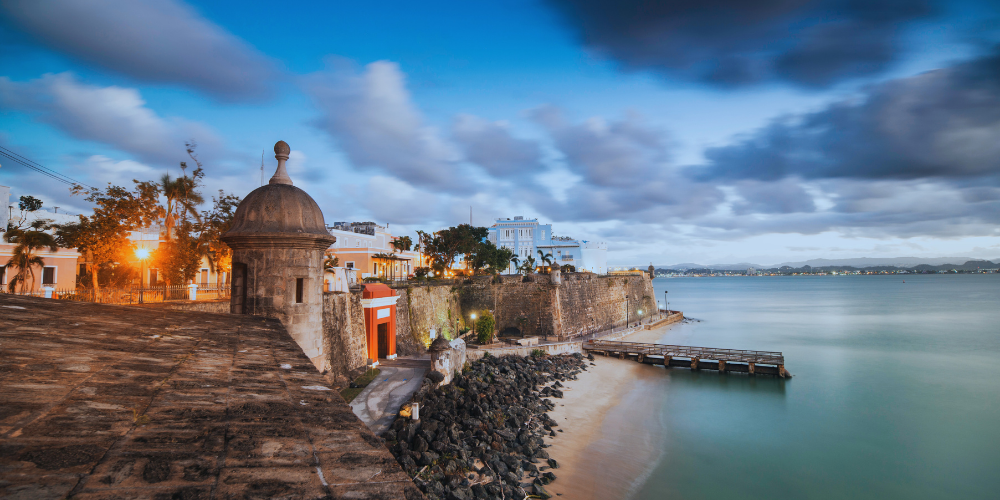
Key Attractions and Highlights
Breathtaking Views: The fortresses offer some of the best views in San Juan. El Morro’s ramparts provide stunning vistas of the Atlantic Ocean, while San Cristóbal offers panoramic views of the city and coastline.
Historical Exhibits: Interactive exhibits and displays within the visitor centers provide deeper insights into the history of the fortresses. Learn about the construction techniques, military strategies, and life of the soldiers who once guarded these walls.
Reenactments and Demonstrations: Depending on the time of your visit, you might catch historical reenactments or weapon demonstrations. These events bring history to life, offering a dynamic and engaging experience.
Underground Tunnels and Passages: Both El Morro and San Cristóbal feature a network of underground tunnels and hidden passages. Exploring these areas gives you a sense of the strategic ingenuity that went into designing these fortresses.
Activities and Adventures
Walking Tours: In addition to the guided tours, several walking tours are available that cover the fortresses and surrounding historical areas. These tours often include stops at other significant sites in Old San Juan, providing a comprehensive overview of the city’s rich history.
Photography Spots: For photography enthusiasts, the fortresses offer numerous opportunities to capture stunning images. The best times for photography are early morning and late afternoon when the light is soft and the crowds are thinner.
Family-Friendly Activities: The site offers various activities suitable for families and children, including scavenger hunts, interactive exhibits, and educational programs designed to engage young minds.
Practical Information
Weather and Best Time to Visit: San Juan enjoys a tropical climate, with warm temperatures year-round. The best time to visit is during the winter months, from December to April, when the weather is pleasant and dry. Summers can be hot and humid, with occasional rain showers.
Accessibility: The visitor centers and main tour paths are wheelchair accessible. If you have specific accessibility needs, contact the site in advance to ensure a comfortable visit.
Safety Tips: Always follow the guide’s instructions and stay on marked paths. The fortresses can be slippery, so wear appropriate footwear. Bring water and stay hydrated, especially during the warmer months. Familiarize yourself with emergency procedures and contact information.
Nearby Attractions
Old San Juan: After exploring the fortresses, take time to wander through the charming streets of Old San Juan. This historic district is home to colorful colonial buildings, lively plazas, and numerous shops, cafes, and restaurants.
Museo de Las Américas: Located in the Ballajá Barracks, this museum offers a deep dive into the cultural history of the Americas. Its exhibits cover everything from indigenous cultures to contemporary art.
Local Dining and Accommodation: There are plenty of dining options near the historic site. Enjoy traditional Puerto Rican cuisine at local favorites like Raíces or try international flavors at Marmalade. For accommodations, consider staying at one of the historic hotels in Old San Juan, such as Hotel El Convento, which offers a blend of modern comfort and historical charm.
The San Juan National Historic Site is a testament to Puerto Rico’s rich history and cultural heritage. Its towering fortresses, panoramic views, and engaging exhibits make it a must-visit destination for travelers. Whether you’re a history buff or simply looking to explore the beauty of San Juan, a visit to this historic site promises to be an unforgettable experience.

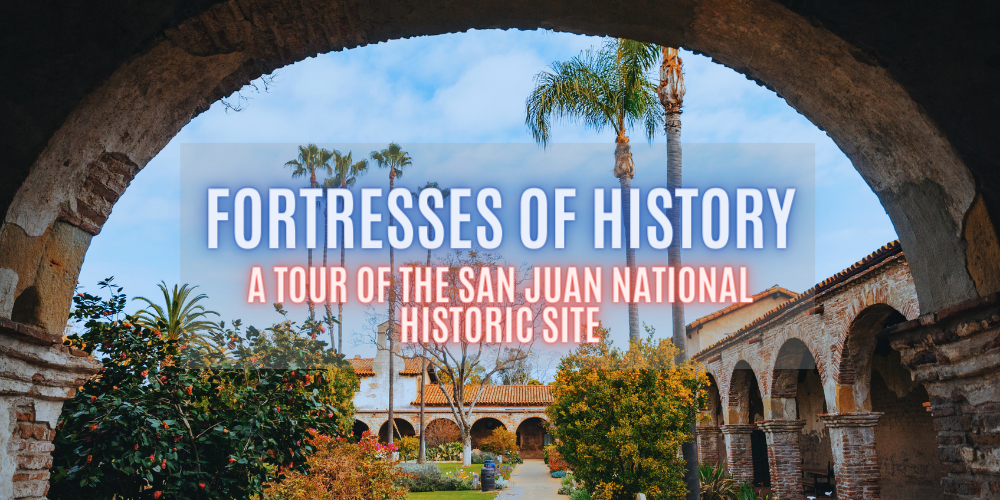
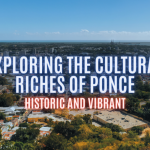
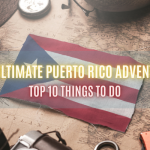




[…] was legalized, and Puerto Ricans could proudly display it again. This moment marked a resurgence of Puerto Rican pride and solidarity, and the flag became a unifying […]